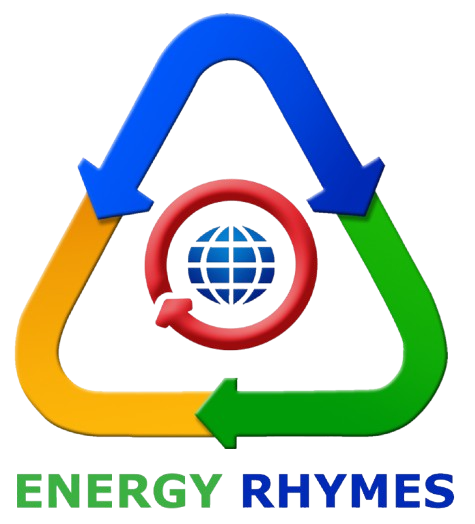After Sale - Service
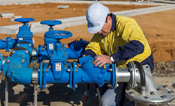
Energy Rhymes provides ongoing support and assistance to their customers which includes resolving customer complaints, offering technical support, providing maintenance services, and addressing product issues or defects
- It is essential for achieving customer satisfaction and good long term relationship
- Provide a competitive advantage
- Play a role in increasing the success rate of new product
.
Operation & Maintenance
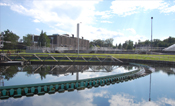
Operation and maintenance (O&M) of a treatment plant is a set of activities that ensure the plant runs efficiently and meets environmental and regulatory standards. O&M includes:
- Regular inspections: Check equipment, pipelines, and process units for damage, wear, or malfunction
- Preventive repairs: Replace or repair worn or damaged components before they cause major breakdowns
- Parameter monitoring: Continuously monitor critical parameters like flow rates, chemical levels, and biological indicators
- Calibration and testing: Regularly calibrate instruments and test water quality parameters
- Corrective maintenance: Address and repair issues or malfunctions as they arise
- Predictive maintenance: Use advanced monitoring and diagnostic tools to predict potential failures and schedule maintenance
Some other maintenance tasks include:
- Checking the color and smell of the biomass
- Replacing valve boxes and diaphragms
- Inspecting the integrity of the lid seal
- Checking bacteria health
- Inspecting the diffuser
- Checking the quality of the final water
- Desludging and servicing the plant at least once a year
- Refilling the plant with water after desludging
.
Recommission Of Plant
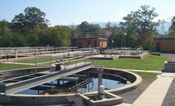
Recommissioning a treatment plant involves testing and adjusting its systems and equipment to ensure it’s working as intended. It can also involve replacing equipment, adjusting processes, or enhancing systems to meet regulatory standards.
Here are some steps involved in recommissioning an STP:
- Inspection and assessment
A thorough inspection and assessment of the STP is performed.
- Flushing
The system is flushed.
- Inoculation
The STP is inoculated with EM culture.
- Monitoring and maintenance
The STP is regularly monitored and maintained.
- Testing and calibration
All systems and equipment are tested and calibrated to ensure they’re functioning optimally.
- Performance verification
The performance of the recommissioned plant is verified through comprehensive tests.
- Regulatory reporting
All required documentation and reports are submitted to relevant regulatory authorities.
.
Rehabilitation - Modernization
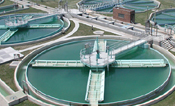
As sewage treatment plants age, various issues can arise, including mechanical and electrical system failures, corrosion of structures, decreased treatment efficiency, and compliance challenges with evolving environmental regulations. These problems can lead to increased operational costs, environmental risks, and compromised treatment capacity. Therefore, it becomes imperative to rehabilitate aging STPs to maintain their functionality and extend their lifespan.
Importance of Rehabilitation
Following are the points which show the importance of Rehabilitation of STPs:
- Enhanced Performance:Rehabilitation improves the performance and efficiency of aging STPs. By addressing structural deficiencies, optimizing treatment processes, and upgrading equipment, the plant’s capacity to treat wastewater effectively can be restored. This ensures compliance with regulatory standards and supports the sustainable management of water resources.
- Reduced Operating Costs:A rehabilitated STP can achieve cost savings in the long run. Upgrades to energy-efficient technologies, process optimization, and advanced monitoring systems can reduce energy consumption, chemical usage, and operational expenses. This allows for optimal resource utilization and lowers the overall lifecycle cost of the facility.
- Improved Reliability:Aging infrastructure is more prone to breakdowns and system failures, leading to disruptions in wastewater treatment. Rehabilitation measures, such as replacing worn-out components, upgrading control systems, and implementing preventive maintenance practices, enhance the reliability and resilience of the plant. This ensures uninterrupted operation and minimizes the risk of service interruptions.
- Environmental Compliance: Rehabilitation enables STPs to meet the increasingly stringent environmental regulations. Upgrading treatment processes, implementing advanced filtration systems, and enhancing disinfection methods help achieve higher effluent quality standards. This protects the receiving water bodies, preserves ecosystems, and supports the sustainable development of the surrounding environment.
Modernizing treatment plants involves integrating advanced technologies to improve the efficiency and effectiveness of the existing infrastructure. These technologies can help to:
- Remove pollutants: Advanced oxidation processes (AOPs), membrane bioreactors (MBRs), and sequential batch reactors (SBRs) can help to remove pollutants and control capabilities.
- Reduce environmental impact: Modernizing can help to minimize the adverse environmental impact of the plant.
- Improve efficiency: Modernizing can help to improve the efficiency of the plant.
Annual Maintenance
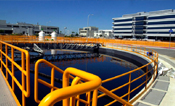
An Annual Maintenance Contract (AMC) for an Treatment Plant is a service agreement between the owner and a maintenance service provider. The purpose of an AMC is to ensure that the plant operates efficiently, effectively, and in compliance with environmental regulations throughout the year. This type of contract helps in minimizing downtime, preventing unexpected breakdowns, and maintaining the overall performance of the plant. An AMC can help ensure the longevity and efficient operation of your treatment plant. Make sure the terms and responsibilities are clearly defined in the contract, and consider consulting legal and environmental experts when drafting or reviewing the agreement
